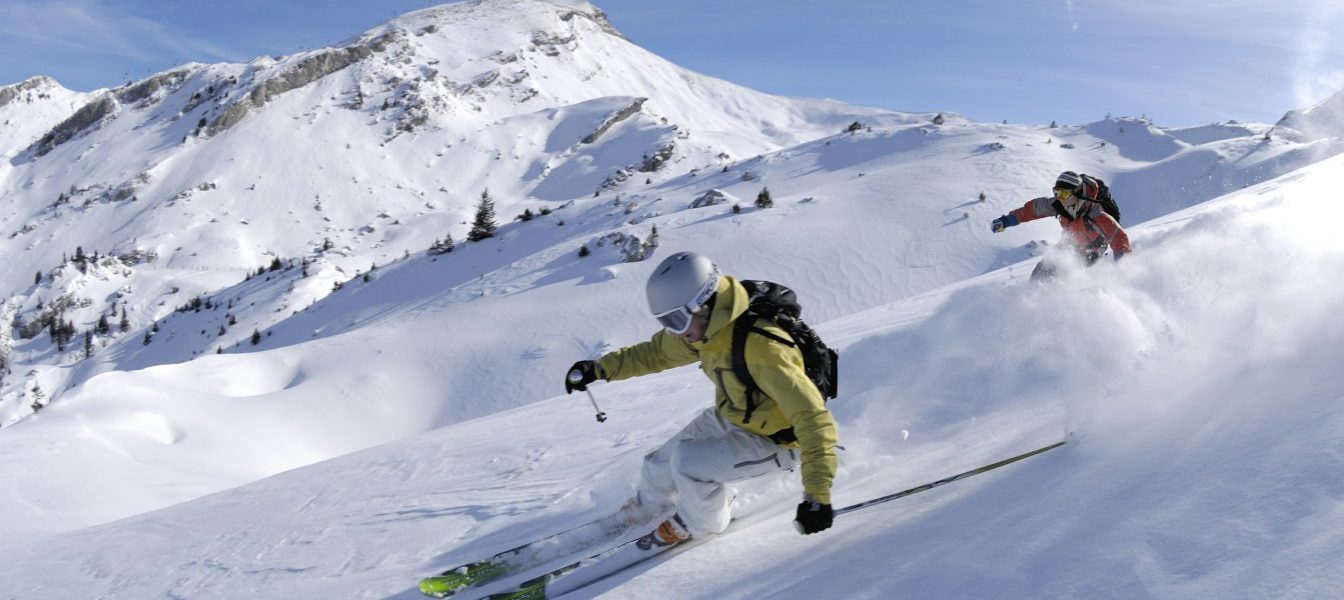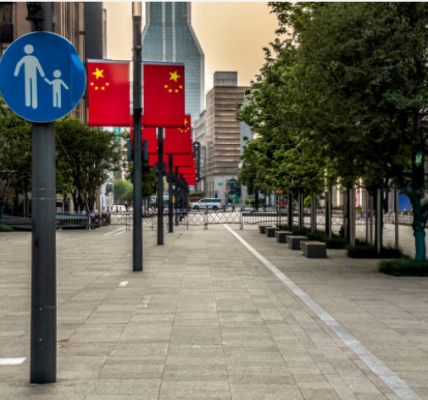Introduction
For decades, winter tourism has been a hallmark for tourists looking for some snow filled fun to get into the Christmas spirit. However, with rising global temperatures, the winter tourism industry may take a hit. Across the northern hemisphere, home to many locations for winter holidays, average snowfall is shrinking. In particular, the Arctic is warming nearly four times faster than other areas of the north (RFI, 2024), and it is predicted the Alpine region will be impacted three times more by global warming than the rest of the northern hemisphere (Bassetti and Michielin, 2023).
All the while, the winter tourism industry is estimated to reach a value of $224.7 million by 2033 (Plummer, 2024), but the likelihood of this in the face of climate change may decrease.
Case study: Lapland
Lapland, Finland – also known as Santa’s hometown – is a commonly visited winter tourism destination. Finavia reports that in 2023 alone, 1.5 million passengers passed through Lapland’s airport, reflecting its popularity for adults and children alike looking for a winter wonderland in Santa’s hometown.
However, climate change has significantly impacted winter tourism in the region. This December, travel operator TUI was forced to cancel numerous excursions because of inadequate snowfall (Bailey, 2024). Traditional activities like husky sleigh rides, cross country skiing and snowmobiling became impossible to operate without snow, with all that was left being ice as a result of heavy rain in the area. While there are other activities available in Lapland and in Santa’s village, the lack of availability of snow activities – the very defining activity of Christmas – indicates a concerning trend for the future.
To adapt, the travel authorities are putting in measures. Firstly, Christmas marketing in the region was stopped five years ago (Gale-Coleman, 2024). This was because of the heavy tourism already present in the region and the negative effects that come from over tourism. Another reason to prevent Christmas marketing is to boost marketing for the spring and summer times. While winter remains the peak season, this will hopefully balance the distribution of tourism year round. At the moment, VisitFinland is advertising experiencing the Midnight Sun and lake rafting as possible excursions to undertake outside of the Christmas season.
Case study: the Alps
The Alps, the most popular skiing destination in Europe, is another winter tourism destination suffering from the effects of climate change. Over the last century, temperatures in the Alps have risen by 2 degrees; double the global average. By the end of the century, snow coverage in the Alps can decrease up to 70% (CIPRA, 2012).
The economic consequences are clear. Up to 120 million tourists visit the Alps every year (WWF, n.d.), and for communities where they are dependent on income from winter tourism, a lack of tourists due to a lack of snow causes economic uncertainty.
Finding ways to adapt to climate change in the Alps is vital. Similarly to Finland, encouraging year-round tourism in the off season can bring in new sources of income. For example, many towns in the Alps look to appeal to secondary homeowners, with the rise of remote working making it possible to live in the Alps during the off season, while working. Furthermore, the use of artificial snow can temporarily reduce financial losses for ski resorts, (Bassetti and Michielin, 2023) but these are not long term solutions.
For local communities, reinventing their identities from winter tourism can boost local tourism in the area, year round. For example, MelloBlocco is an international climbing competition held annually in Val Masino and Val di Mello, towns in the Italian Alps. This changes the local identity from having seasonal winter tourism, to having year round tourism to bring in new sources of income. Transitions like these show promise, but require significant investment and cultural shifts locals need to be satisfied with.
Environmental impact: In depth
There is an alarming paradox in which tourism itself contributes to the very problem of climate change. A one way flight from London to Geneva, a popular entry point to the Alps, has 259 kilograms of CO2 emissions per passenger (BMC, 2024). When multiplied by the sheer amount of people that travel from all over the world to experience winter in the Alps, leads to staggering figures on the carbon footprint winter tourism leaves.
Furthermore, the process of artificial snowmaking, a temporary solution mentioned earlier, consumes considerable amounts of energy. According to a study by researchers from University of Innsbruck and University of Waterloo (2023), 130,000 metric tons of CO2 is generated annually to produce artificial snow in an average winter in ski resorts across Canada. For context, this equals the emissions from the electricity consumption of 22,000 cinemas for a year. Artificial snowmaking isn’t the only carbon pollutant. Snowmobiles, vehicles used for popular snow activities, generate the same volume of toxic greenhouse gases as 1,000 cars (Palma and Stewart, 2008).
This demonstrates a challenge for the tourism industry, by striking a balance of maintaining economic benefits of temporary solutions, while still aiming to reduce its environmental impact.
Conclusion
Climate change is melting snow and years of winter tourism tradition. The reality for popular tourist destinations must be faced; that their future needs to be reimagined from winter wonderland, to year round wonderland. As Lapland and the Alps become warmer in the coming years, winter tourism faces a great challenge.
Sources:
WWF (no date) Alpine tourism, WWF. Available at: https://wwf.panda.org/discover/knowledge_hub/where_we_work/alps/problems/tourism/ (Accessed: 03 January 2025)
Bailey, J. (2024) Dream Lapland holidays on ice as Tui cancels trips for lack of snow, euronews. Available at: https://www.euronews.com/travel/2024/12/05/christmas-lapland-cancelled-lack-of-snow (Accessed: 03 January 2025).
Bassetti, F. and Michielin, D. (2023) Game over: The future of skiing and winter tourism, Foresight. Available at: https://www.climateforesight.eu/articles/game-over-the-future-of-skiing-and-winter-tourism/ (Accessed: 03 January 2025).
CIPRA (2012), Climate change: Why the Alps are particularly affected, CIPRA. Available at: https://www.cipra.org/en/cipra/international/projects/completed/cc-alps/about/climate-change-alps (Accessed: 03 January 2025).
Gale-Coleman, E. (2024) I went to the world’s most christmassy place – here’s what it’s like to live there, Time Out Worldwide. Available at: https://www.timeout.com/travel/santa-claus-village-rovaniemi (Accessed: 03 January 2025).
Palmer, S. and Stewart, D. (2008) Snowmobile Impact on the Natural Environment, Vermont Legislative Research Shop. Available at: https://www.uvm.edu/d10-files/documents/2024-06/snowmobilesenvironmentalimpact.pdf (Accessed: 03 January 2025).
Plummer, D. (2024) Will climate change end the dream of a white christmas?, Forbes. Available at: https://www.forbes.com/sites/dianneplummer/2024/12/25/will-climate-change-end-the-dream-of-a-white-christmas/ (Accessed: 03 January 2025).
Rfi (2024) As arctic climate warms, even Santa runs short of snow, RFI. Available at: https://www.rfi.fr/en/environment/20241201-as-arctic-climate-warms-even-santa-runs-short-of-snow (Accessed: 03 January 2025).
Finavia, (2024) Statistics: A total of 18.3 million passengers flew via Finavia’s airports in 2023 – an increase of 19% year-on-year, Finavia. Available at: https://www.finavia.fi/en/newsroom/2024/statistics-total-183-million-passengers-flew-finavias-airports-2023-increase-19-year (Accessed: 03 January 2025).
Universität Innsbruck (2023) Sustainability of artificial snow on ski-slopes, Universität Innsbruck. Available at: https://www.uibk.ac.at/en/newsroom/2023/sustainability-of-artificial-snow-on-ski-slopes/ (Accessed: 03 January 2025).
BMC (2024) What’s the carbon footprint of flying to climbing and trekking destinations?, The British Mountaineering Council. Available at: https://thebmc.co.uk/en/whats-the-carbon-footprint-of-flying-to-climbing-and-trekking-destinations (Accessed: 03 January 2025).






